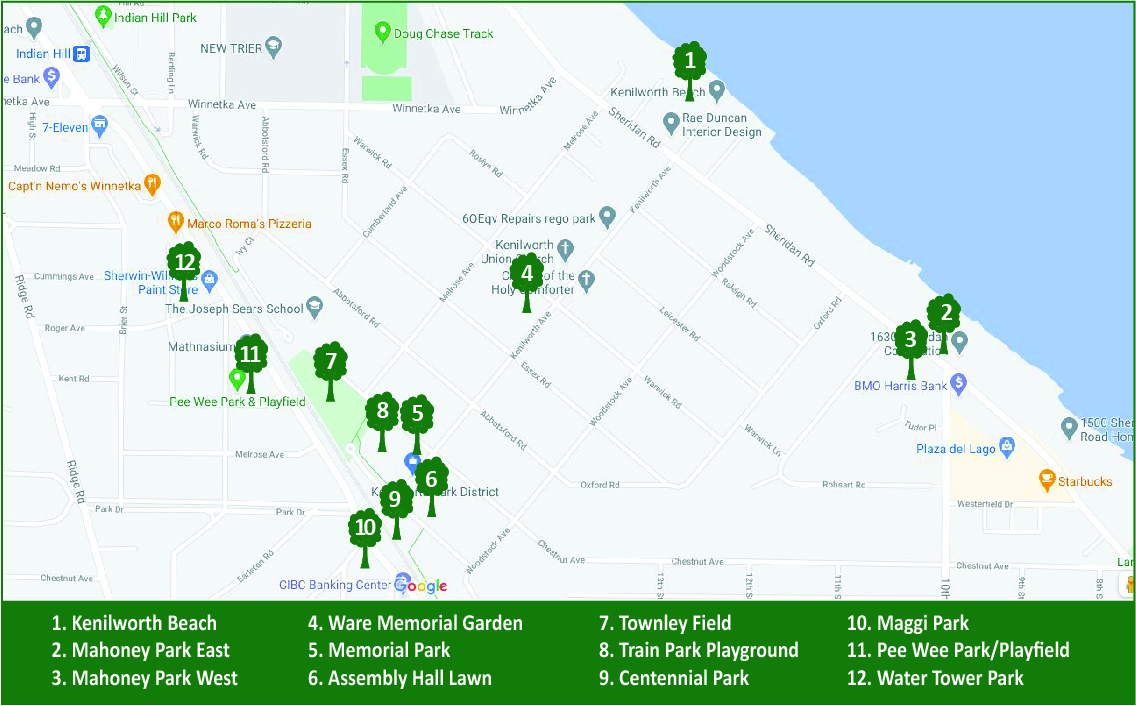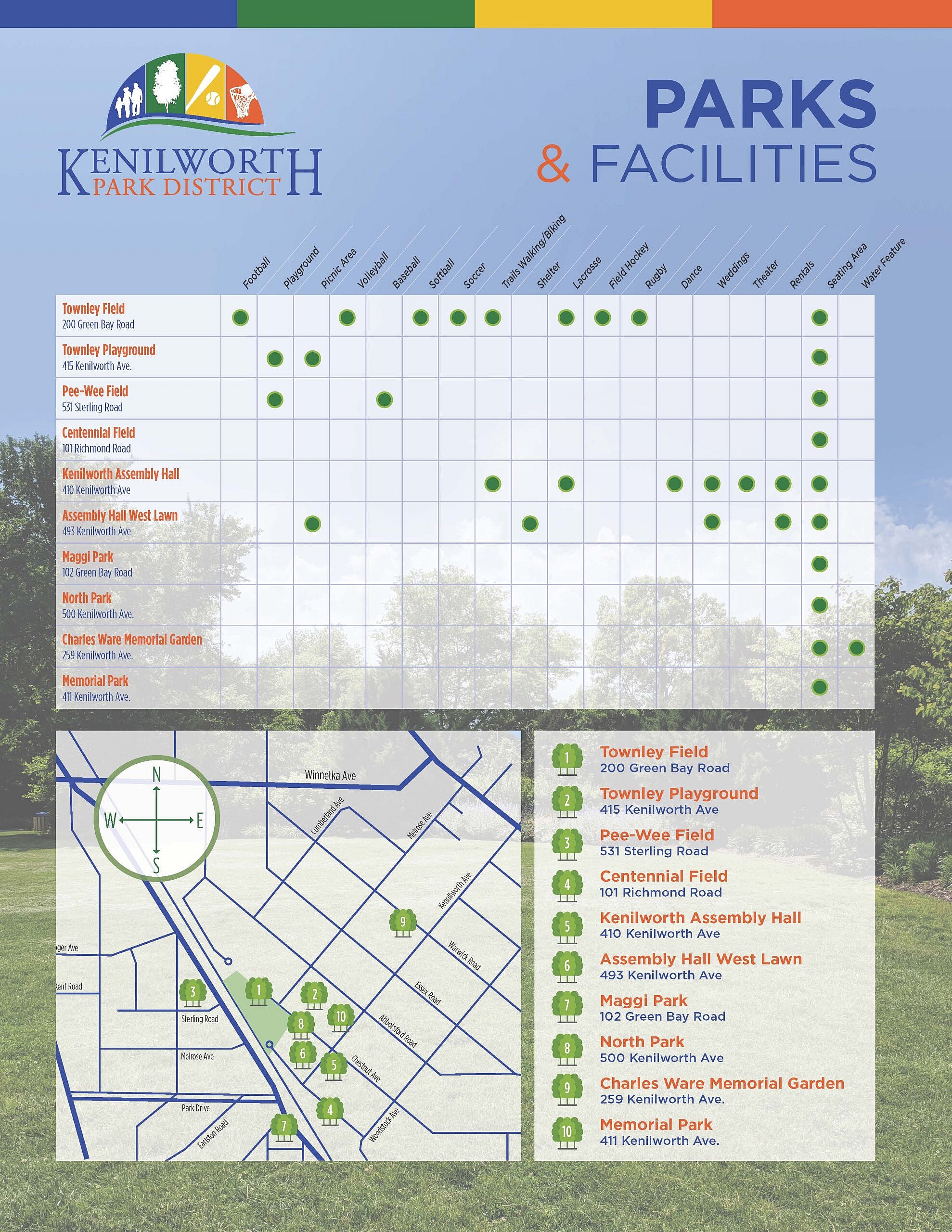



Beginning with its’ founder Joseph Sears, the residents of Kenilworth have long been committed to its green spaces. The village was planned by Sears during the City Beautiful movement as a suburban respite, with large community park spaces, large setbacks, and tree-lined streets.
Over the years, four independent garden clubs were formed by residents; the Kenilworth Garden Club (1915), the Kenilworth Home and Garden Club (1923), Kenilworth Clippers (1941), and the Garden Arts Club (1959) each with their own mission, and all sharing in a love of gardening and the stewardship of the village’s green spaces. In 1969, the Council of Garden Clubs was created for the purpose of “coordinating the efforts of the Park District and clubs to create and promote civic interest in beautifying the village”. Following a successful bicentennial celebration and fundraising effort in 1976, the Council formed the Beautification Committee, its purpose being to oversee the distribution of funds used in the spirit of village beautification. Not only did the Council contribute to the overall vision for Kenilworth’s parks and provide fundraising through annual events, but it also often supplied the labor, with the garden clubs being assigned responsibility for seasonal planting and weeding in various locations around the village.
This strong spirit of volunteerism lives on today. The garden clubs continue to assist the Village and Park Districts with the overall vision for Kenilworth’s green spaces, but beyond that the clubs are responsible for the plantings at the train station, the triangles along Ridge Road, planting and pruning the trees along Park Drive, the entrance gardens at the Assembly Hall, and the holiday wreaths and stanchions.
Over the past 25 years, the Beautification Committee has sought to revive the Prairie Style that in 1933 was introduced to Kenilworth by landscape designer Jens Jensen in his design for Mahoney Park. This style, which promotes the planting of native and perennial plants, trees and shrubs can be seen throughout the village. The larger parks include an open center, or “meadow”, and are ringed with stratified and clustered plantings that allow visitors to feel immersed in nature no matter the season.
Visitors to Kenilworth today will find a community of vibrant green spaces and bountiful planters. It is truly a village within a garden. Memorials, tribute trees and historical markers celebrate the village’s history. Numerous service projects from past Kenilworth Eagle Scouts have enhanced the spaces. These include the Train Park totem pole restoration, benches and Adirondack chairs, historical markers, and the installation of bird houses. Since 1968 the Boy Scouts have also maintained a tree nursery; once these trees are mature they are re-planted around the village. Extensive plantings of trees and bulbs are the contribution of the Kenilworth Girl Scouts over the years, including areas of Townley Field and at the Girl Scout Corner in Mahoney Park.
